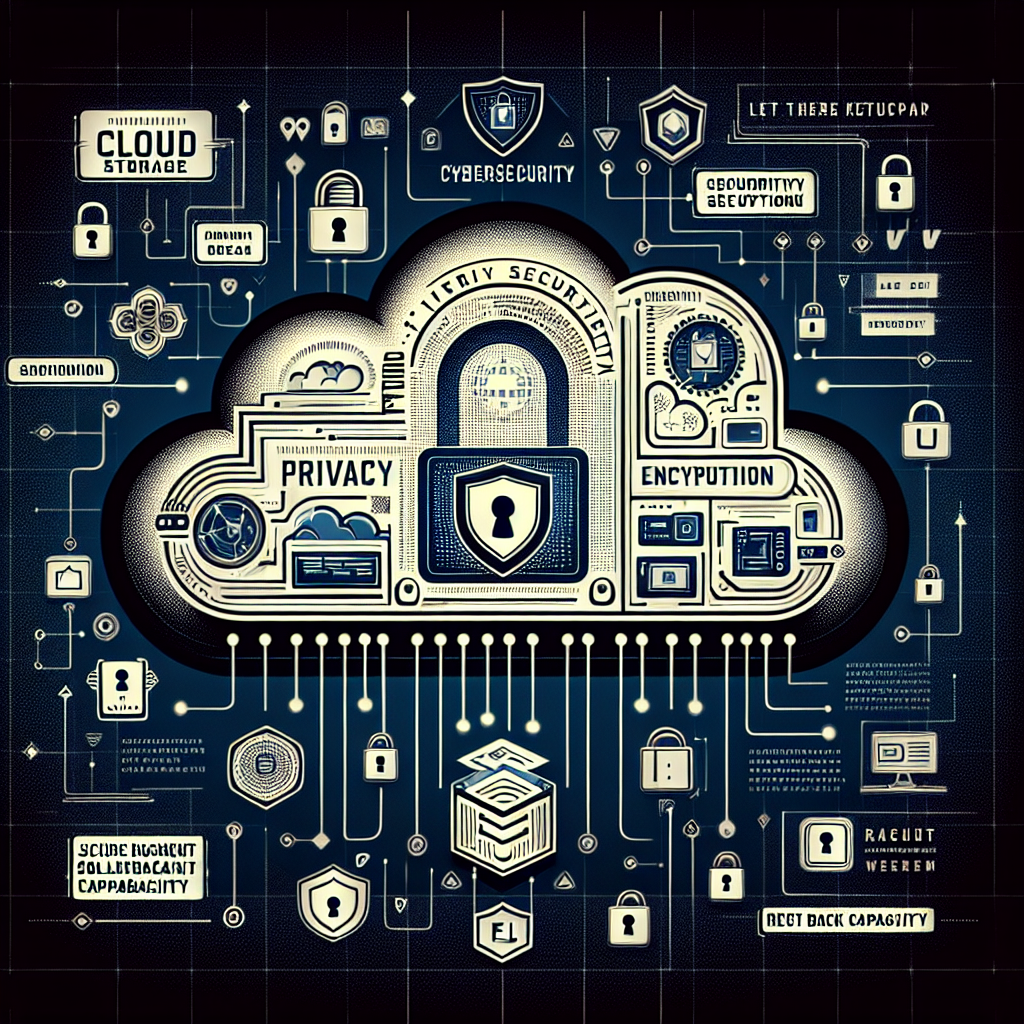Unlock encrypted content
Please enter your SSCE key to initiate on-the-fly decryption.
Decryption key: (Click cancel if you don't have the key)
Copied link to clipboard.
This feature is unavailable for free accounts. Upgrade now and enjoy all Premium benefits.
Go Premium!
This feature is unavailable for free accounts. Upgrade now and enjoy all Premium benefits.
Go Premium!
Please open this page in browser ( Google Chrome or Safari ) to use this feature.
Open In Browser
Blockchain Data Storage: Revolutionizing Data Security and Storage
Random related video for this blog.
Copied share link to clipboard.
With the rapid advancements in technology, the need for secure and efficient data storage solutions has become paramount. This is where blockchain data storage comes into play. Combining the power of blockchain technology with data storage capabilities, it offers a revolutionary approach to data security, accessibility, and integrity. In this article, we will explore the potential of blockchain data storage, along with other cutting-edge technologies like nanotechnology, genetic modification, and real-time system monitoring, to transform the way we store and protect our valuable information.
Nanotechnology: The Future of Data Storage
Nanotechnology, the science of manipulating matter at the atomic and molecular scale, holds immense promise for data storage. Traditional storage devices like hard drives and flash drives are limited in terms of capacity and durability. Nanotechnology offers a solution to these limitations by enabling the creation of ultra-compact and high-capacity storage devices. One of the most exciting applications of nanotechnology in data storage is the development of nanoscale memory devices. These devices utilize nanoscale structures, such as nanowires and nanodots, to store and retrieve data. With their small size and high density, nanoscale memory devices can potentially store vast amounts of information in a fraction of the space required by conventional storage devices. Furthermore, nanotechnology also offers the potential for enhanced data security. By leveraging the unique properties of nanomaterials, such as carbon nanotubes or graphene, it becomes possible to create tamper-resistant storage devices. These nanomaterials have exceptional strength and electrical conductivity, making them ideal candidates for protecting sensitive data from unauthorized access or physical damage.Data Security: Safeguarding Information in the Digital Age
As the volume and value of data continue to grow exponentially, ensuring its security has become a critical concern. Data breaches and cyber attacks have become all too common, posing significant risks to individuals and organizations.However, emerging technologies, such as blockchain and genetic modification, offer promising solutions to enhance data security and protect against unauthorized access or manipulation. Blockchain, the underlying technology behind cryptocurrencies like Bitcoin, has gained widespread attention for its decentralized and immutable nature. By storing data across a distributed network of computers, blockchain eliminates the need for a central authority, making it virtually impossible for malicious actors to tamper with the stored information. This decentralized approach to data storage ensures transparency, integrity, and security, making it an ideal solution for sensitive data, such as financial records or personal information. Genetic modification, although primarily associated with advancements in healthcare and agriculture, also holds potential for enhancing data security. By using genetic engineering techniques, it becomes possible to encode data into the DNA of living organisms. DNA, with its remarkable stability and information storage capacity, offers a unique and secure medium for long-term data storage. Moreover, the ability to encrypt data within the DNA sequence further enhances its security, as only those with the decryption key can access the information.
Real-Time System Monitoring: Ensuring Data Integrity and Availability
In today's fast-paced digital landscape, real-time system monitoring is crucial to maintain the integrity and availability of data. With the increasing complexity of systems and the constant threat of cyber attacks, organizations need robust monitoring solutions to detect anomalies, identify potential vulnerabilities, and respond promptly to any security breaches. Real-time system monitoring utilizes advanced technologies like artificial intelligence (AI) and machine learning to continuously analyze data and identify any deviations from normal behavior. By monitoring network traffic, system logs, and user activities, these systems can detect suspicious activities, such as unauthorized access attempts or data exfiltration, in real-time. This proactive approach to data security enables organizations to mitigate risks and prevent potential data breaches before they occur. Additionally, real-time system monitoring plays a vital role in ensuring the availability of data. By continuously monitoring system performance, organizations can identify any potential bottlenecks or failures that may impact data accessibility. This enables prompt troubleshooting and remediation, minimizing downtime and ensuring uninterrupted access to critical information. In conclusion, the convergence of blockchain data storage, nanotechnology, genetic modification, and real-time system monitoring offers a glimpse into the future of data security and storage. These cutting-edge technologies provide innovative solutions to address the evolving challenges of data protection, accessibility, and integrity. By harnessing the power of blockchain, nanotechnology, and real-time monitoring, individuals and organizations can ensure the confidentiality, integrity, and availability of their valuable data. Embracing these technologies will not only safeguard sensitive information but also pave the way for a more secure and efficient digital ecosystem.Frequently Asked Questions (FAQs) Question: How does blockchain data storage protect against data breaches? Answer:
Blockchain data storage utilizes a decentralized and immutable ledger to store data across a network of computers. This eliminates the need for a central authority and makes it virtually impossible for malicious actors to tamper with the stored information. Each data block is cryptographically linked to the previous block, ensuring transparency, integrity, and security. Question: How does nanotechnology enhance data storage capabilities? Answer:
Nanotechnology enables the creation of ultra-compact and high-capacity storage devices by manipulating matter at the atomic and molecular scale. Nanoscale memory devices, utilizing nanowires and nanodots, can store vast amounts of information in a fraction of the space required by traditional storage devices. Nanomaterials, such as carbon nanotubes or graphene, also offer tamper-resistant properties, enhancing data security. Question: How does real-time system monitoring detect and prevent data breaches? Answer:
Real-time system monitoring utilizes advanced technologies like AI and machine learning to continuously analyze data and identify any anomalies or suspicious activities. By monitoring network traffic, system logs, and user activities, these systems can detect unauthorized access attempts, data exfiltration, or potential vulnerabilities in real-time. This proactive approach helps organizations prevent data breaches before they occur.
By Amelia Isabella
Email: [email protected]
Related
Remote Pilot Systems: Revolutionizing Data Management and Secure File Sharing...
January 26, 2025
Read More
The Future of Technology: Exploring Human-Machine Interfaces, Biohacking, and Cloud...
January 29, 2025
Read More
The Evolution of Secure File Sharing: Technological Advancements and Best...
February 5, 2025
Read More
Harnessing the Future: How FileLu Cloud Storage and Advanced Technologies...
February 9, 2025
Read More
The Future of Remote Backup: Exploring FileLu’s Easy-to-Use Mobile App...
February 16, 2025
Read More
Transforming the Future: Exploring the Intersection of Wearable Technology, Cloud...
February 28, 2025
Read More
The Future of File Management: Embracing Autonomous Driving, Cognitive Computing,...
March 2, 2025
Read More
Exploring the Future of File Collaboration: Brain-Computer Interfaces and Wearable...
March 5, 2025
Read More
The Future of File Management: Exploring User-Friendly Technologies and Their...
March 26, 2025
Read More
The Future of Technology: Exploring Emerging Innovations and Their Impact...
March 30, 2025
Read More
Popular
The Future of Digital Transformation: Exploring Smart Homes, Efficient File...
November 30, 2025
Read More
Latest
The Future of Digital Transformation: Exploring Smart Homes, Efficient File...
November 30, 2025
Read More
Exploring the Benefits of Cloud Storage and Innovative Technologies in...
November 26, 2025
Read More
The Future of Technology: Exploring Biohacking, Space Tourism, and Digital...
November 23, 2025
Read More
The Future of File Sharing: Streamlined Workflows for Photographers and...
November 19, 2025
Read More
Exploring the Intersection of Technology: From Cybersecurity to Augmented Reality...
November 16, 2025
Read More
The Future of File Management: Embracing Edge Computing and Efficient...
November 12, 2025
Read More
The Future of File Sharing: Exploring User-Friendly Solutions and Data...
November 5, 2025
Read More
The Future of Cloud Storage: How FileLu Empowers Creative Professionals...
November 2, 2025
Read More
The Future of Autonomous Technologies: Innovations in Robotics, File Sharing,...
October 29, 2025
Read More
Emerging Technologies Revolutionizing File Management: From Li-Fi to Robust Collaboration...
October 26, 2025
Read More
Emerging Technologies: Exploring the Impact of File Access Auditing, Genetic...
October 19, 2025
Read More
The Future of Data Storage: Exploring Advanced Encryption, Mobile Integration,...
October 5, 2025
Read More
Exploring the Future of Data Management: Security, Efficiency, and Cognitive...
September 28, 2025
Read More
Revolutionizing Data Management: Innovations in Storage, Security, and Sustainable Technology.
September 24, 2025
Read More
















